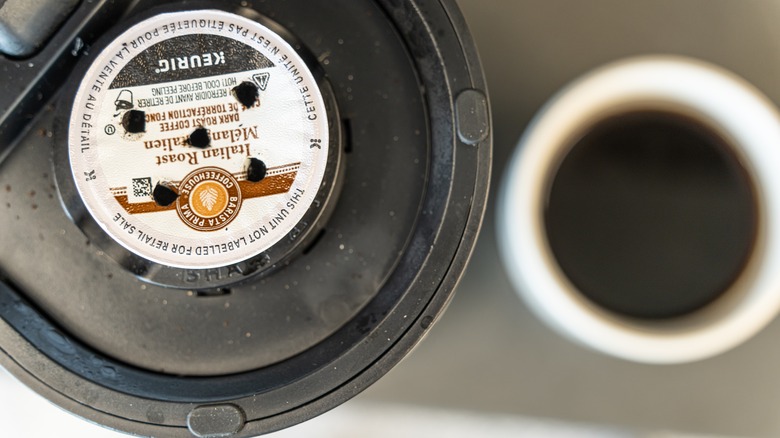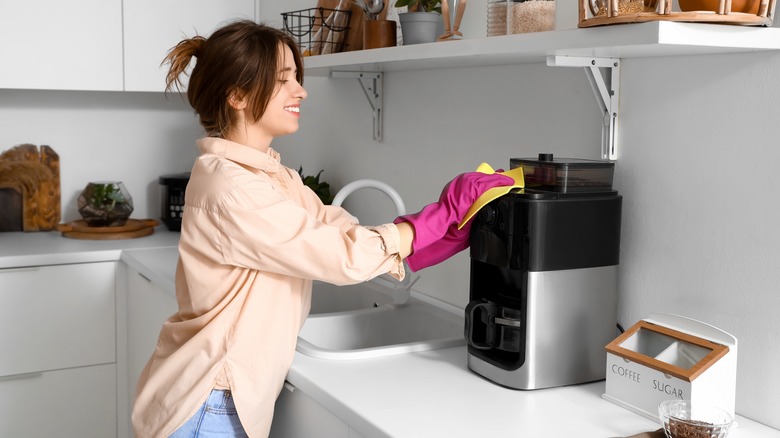Why You Should Remove The K-Cup From Your Keurig After Brewing
We've all done it. You have made your coffee using a Keurig coffee pod, and instead of removing it immediately, you figure that it can sit around for a bit while you enjoy your drink. Well, first of all, you should really stop doing that, and not just because you have an extra step next time you want a brew.
You see, leaving a K-cup in your Keurig might not seem like such a big issue, but it can actually be a serious health concern. Those warm, wet, leftover coffee grounds, combined with heated moisture in the Keurig itself, make the perfect environment for bacteria to not only grow but flourish, and if you aren't cleaning your Keurig thoroughly in between each cup, then you are simply transferring that bacteria into a new cup and then into whoever is drinking said drink.
By removing the K-cup after each use, you are not fully removing the chance of bacteria, but you are reducing it by quite a bit. Taking out those pods will also help prevent that nasty buildup that occurs whenever you use a Keurig, and that buildup can often delay or impair the usage of the coffeemaker — not something you want to deal with when all you want is a strong cup of coffee. Your best bet is to keep a trash can nearby and simply ditch the K-cup after each usage — make it a habit, and you won't have to deal with the nasty aftermath.
What else can you do to keep your Keurig clean?
Now, having to clean your coffee maker might seem like a simple job, but it is incredibly important, and luckily, it isn't that hard to do. First, clean your brewer often and use vinegar when needed. Vinegar is a versatile cleaning tool that acts as a natural descaler to help keep your Keurig fresh — all you need to do is fill the reservoir with vinegar, run a brew cycle, then drain out the vinegar and repeat the process with fresh water to get rid of any aftertaste.
Another tip is to toss out any water left in the reservoir after each use. Sitting water, especially so close to the warming unit in a Keurig, is just a bad combo that readily invites bad bacteria to grow. You can also try leaving the lid off of your Keurig so it can air out after each use rather than letting hot, humid air just sit there.
Finally, give your Keurig a good wipe-down after each use. Keeping the outside clean might be just as important as making sure that the inside is clean, and is yet another way to make sure bad bacteria don't have a chance to get into your coffee. Get into that habit of tossing your K-cup, draining the water, propping the lid open, and wiping it down, and you should have a clean, well-functioning Keurig for a good, long time!

